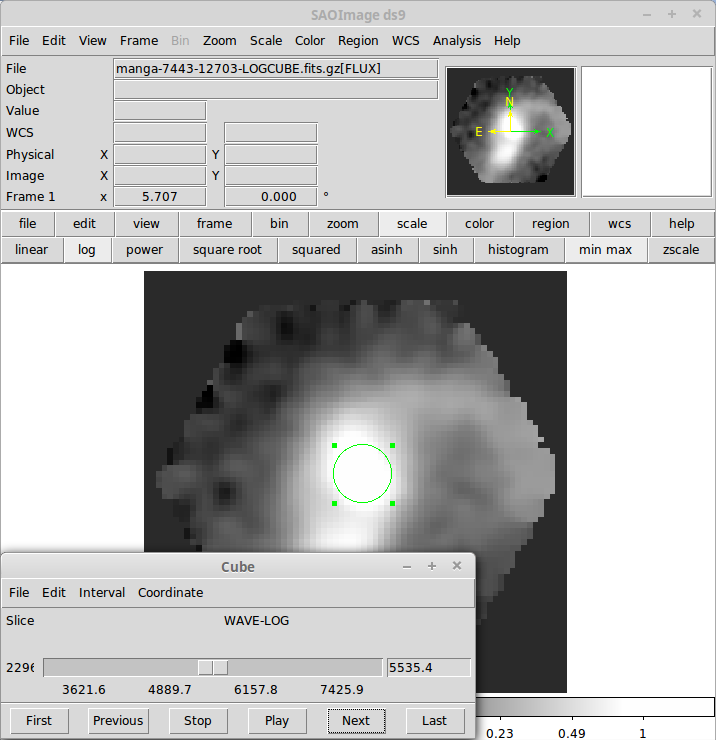
- #Saoimage ds9 tutorial how to
- #Saoimage ds9 tutorial install
- #Saoimage ds9 tutorial update
- #Saoimage ds9 tutorial archive
We therefore present KAFE, 7 the Key-analysis Automated FITS-images Explorer, a tool we developed to specifically address these issues in a single framework. When dealing with archival images from a range of different instruments, observing bands or indeed simply a large sample of sources extracted from a single data archive, easily accessible and uniformly generated image diagnostics are essential to assess and thus exploit the full data potential. In the case of archived images, the FITS header metadata should subsequently be the primary location for the repository of this information. One of the most convenient ways to supply such information is via keyword-value pairs in the FITS header structure that is easily machine readable and can be incorporated into archival databases. 6 The presence of FITS images in interferometric data archives with their intrinsic metadata content facilitates their use in postprocessing analyses, accessible not only to the expert community in the particular wavelength regime but also to a wide range of astronomers from across the fields. The strength of the FITS format lies in its ability to encode not only the data themselves but also a selection of the data characteristics in a machine-independent form, nowadays often exploited for data mining purposes in astronomy. Archival image products are typically in flexible image transport system (FITS) 5 format recognized as the standard archival data format for astronomical data sets.
#Saoimage ds9 tutorial archive
The Atacama Large Millimeter/submillimeter Array 3 (ALMA) archive provides image cubes as part of its output package for a subselection of all data while the NRAO Very Large Array (VLA) archive survey images 4 repository contains images for selected VLA projects.

Data archive contents increasingly comprise not only calibrated datasets but often also include imaging products. 1 In fact, with the Square Kilometre Array 2 -a radio-interferometer that is expected to produce huge amounts of data (of the order of hundreds of PB/year) to be processed and visualized-astronomy is approaching an era in which data mining will rely on image analysis tools as well as automated data mining cross-match strategies of data originating from different instruments. Given the increasing size of data archives, the role of data mining in astronomy will increase in the next few years. This is often done for the purpose of generating a uniform data archive as well as to provide a data reduction framework.

#Saoimage ds9 tutorial update
Update apt database with apt-get using the following command.Interferometric data reduction in the mm to sub-mm regime is increasingly being automated by instrument-specific pipelines both at the raw data reduction stage as well as during the process of image generation. In the following sections we will describe each method.
#Saoimage ds9 tutorial install
There are three ways to install saods9 on Ubuntu 22.04. GUI elements such as the coordinateĭisplay, panner, magnifier, horizontal and vertical graphs, button bar, andĬolor bar can be configured via menus or the command line. Images, tiling, blinking, geometric markers, colormap manipulation, scaling,Īrbitrary zoom, cropping, rotation, pan, and a variety of coordinate Provides for easy communication with external analysis tasks and is highlyĬonfigurable and extensible via XPA and SAMP.Īll versions and platforms support a consistent set of GUI andĭS9 supports advanced features such as 2-D, 3-D and RGB frame buffers, mosaic DS9 supports FITS images and binary tables, multiple frameīuffers, region manipulation, and many scale algorithms and colormaps. SAOImage DS9 is an astronomical imaging and data visualizationĪpplication.
#Saoimage ds9 tutorial how to
In this tutorial we learn how to install saods9 on Ubuntu 22.04. saods9 is Image display tool for astronomy Introduction


 0 kommentar(er)
0 kommentar(er)
